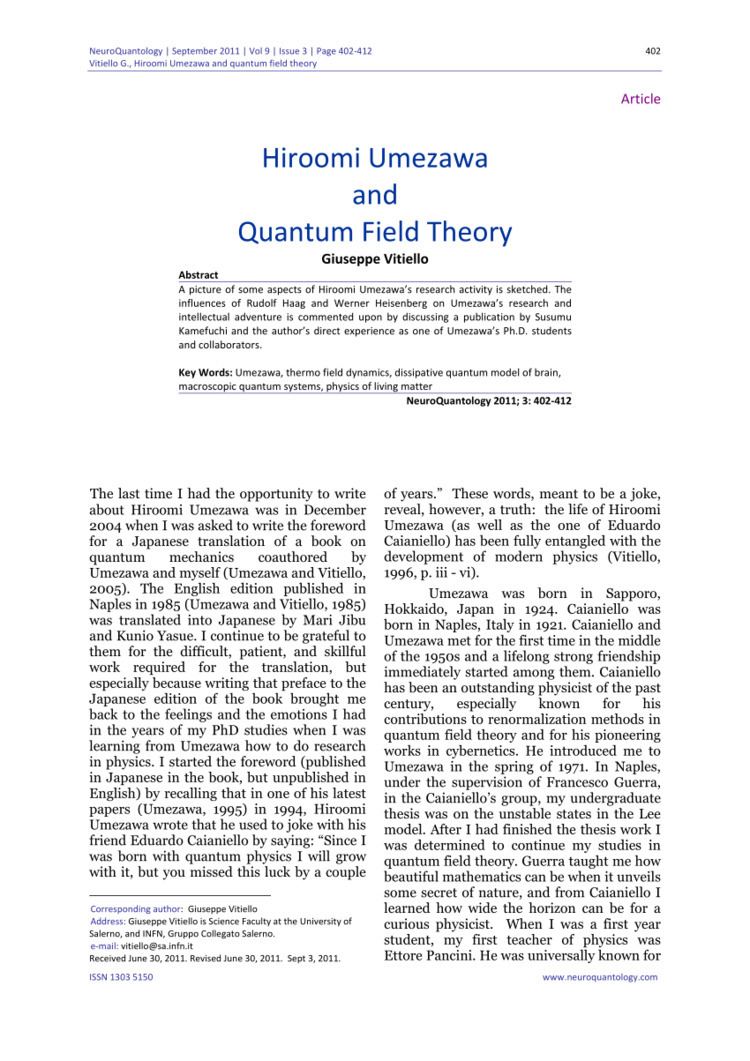Role Physicist Name Hiroomi Umezawa | ||
 | ||
Alma mater Nagoya University, JapanUniversity of Wisconsin–Milwaukee, Wisconsin, USAUniversity of Alberta, Canada Died March 1995, Edmonton, Canada Books Thermo Field Dynamics and Condensed States, Advanced field theory, Quantum field theory, Quantum mechanics | ||
Hiroomi Umezawa (梅沢 博臣, Umezawa Hiroomi) (September 20, 1924 – March 24, 1995) was a physicist and Distinguished Professor in the Department of Physics at the University of Wisconsin–Milwaukee. He is known for his fundamental contributions to quantum field theory and for his work on quantum phenomena in relation to the mind.
Contents

Education, career and work
Umezawa obtained his PhD from Nagoya University, Japan in 1952. He worked at the University of Tokyo, Japan, and the University of Naples, Italy, and took up a position as professor at the University of Wisconsin–Milwaukee (UWM) in 1966, already considered a famous physicist at the time. He joined the University of Alberta, Canada, in 1975 when he took the Killam Memorial Chair as Professor of Physics, a position which he held until his retirement in 1992.
Umezawa is recognized as one of the eminent quantum field theorists of his generation. He applied his results in quantum field theory also to high energy physics, condensed matter physics, nuclear physics and statistical physics, as well as his considerations of quantum theory and the mind.
In 1967, together with L.M. Ricciardi he proposed a quantum theory of the brain a spatially distributed system forms in which spontaneous symmetry breaking at micro level forms a basis for processing at macro level. In this model, the information resides in the virtual field associated with the dynamics of the cellular matter. This model was subsequently expanded by Stuart, Takahashi and Umezawa with their proposal of the development of long range correlations among neurons due to the interaction of two quantum fields. The approach was built upon by many others, including Karl H. Pribram, and was later expanded by Giuseppe Vitiello to a dissipative quantum model of brain.
Umezawa's scientific work has been characterized by his colleagues at UWM as "marked by extreme originality".
Memorial fund
After his death in 1995, Umezawa's family, friends and students set up the Umezawa Fund in his memory, dedicated to support studies in physics; among the Memorial Distinguished Visitors has been physicist Gordon Baym of the University of Illinois in 2007.
Publications
Articles on the quantum theory of mind:
